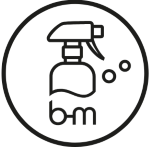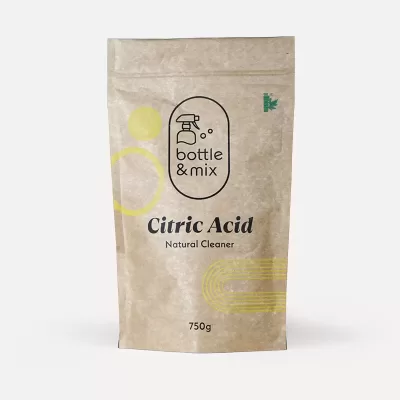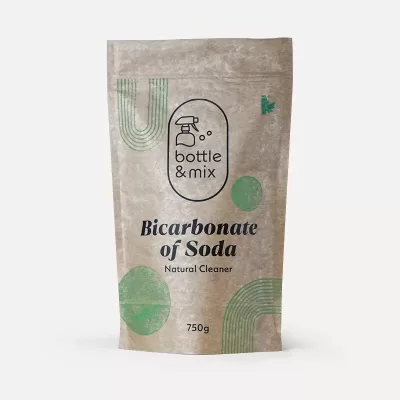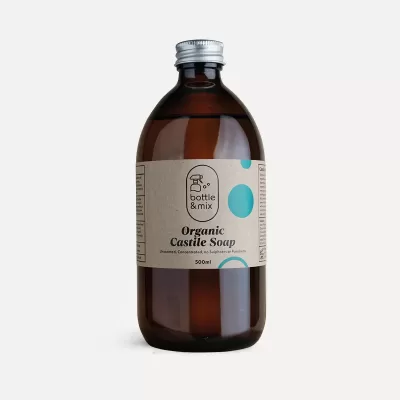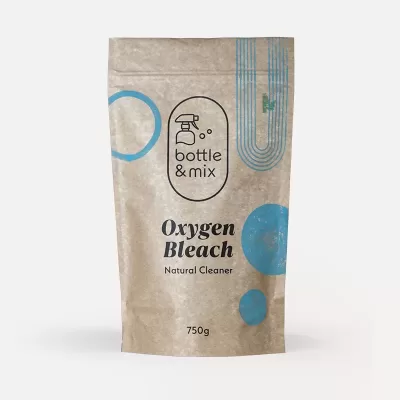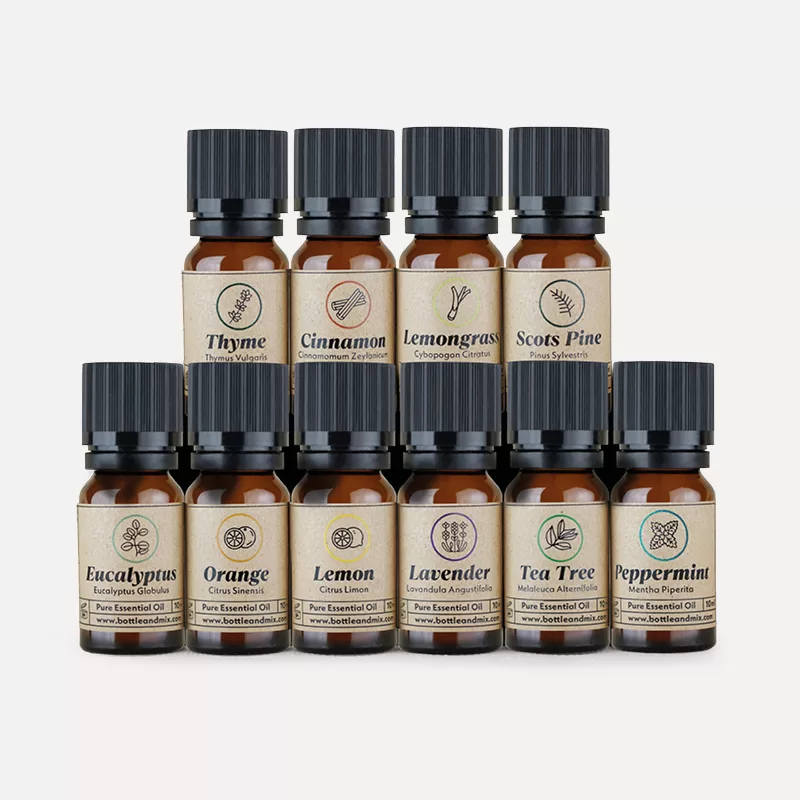Factor Chemistry:
It‘s all about the PH Factor
UNDERSTANDING ACIDS & BASES
Let’s take a little trip down memory lane to those science classes we all had to endure in school where we learned about acids and bases. Understanding these basic concepts can actually help us become more effective cleaners. We’ll learn which natural cleaning ingredients work best for specific tasks, and why certain ingredients can be a no-go when combined.
To put it simply, the pH scale measures how acidic or alkaline a chemical solution is when mixed with water. This range is from 0 to 14, with 7 being neutral. Scores below 7 are classified as acidic, while anything above 7 is alkaline. This fundamental concept is essential to keep in mind when it comes to cleaning since acids work like a charm when it comes to getting rid of pesky calcium deposits, rust, and other minerals. On the other side, alkaline (base) solutions are brilliant at removing dirt, grease, and oils. To make an effective cleaning solution, you’ll want to keep it either on the acidic or the alkaline side.
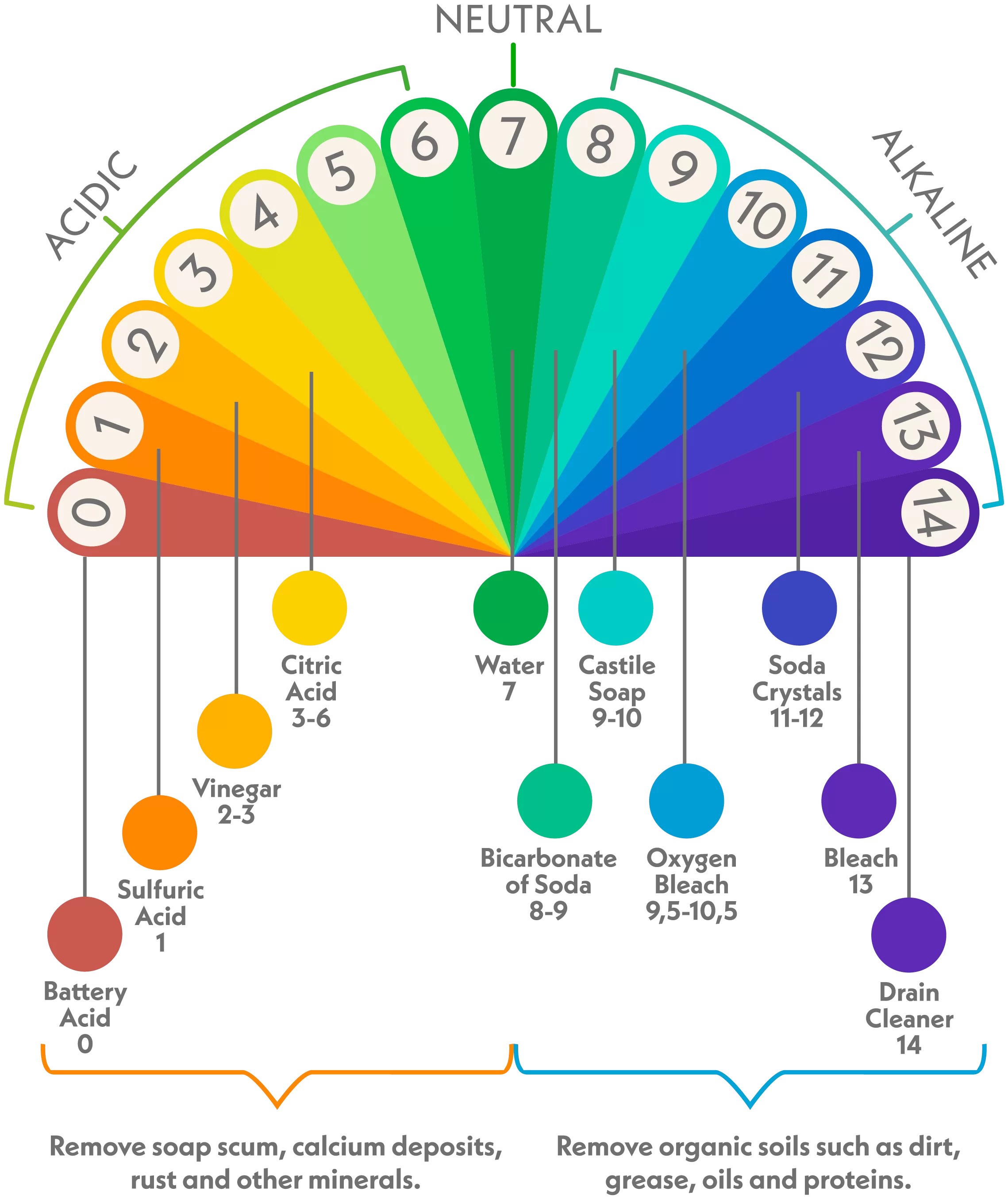
Chemistry Happens
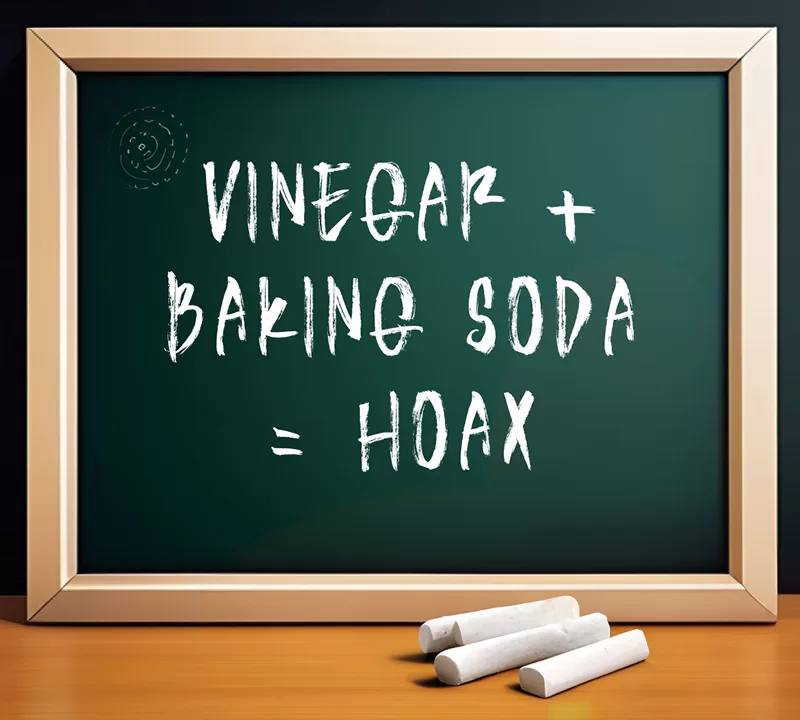
Have you tried mixing Vinegar and Baking Soda (Bicarbonate of Soda) for a natural cleaning solution and felt let down? You’re not alone!
The bubbling action is definitely worth watching as it is a chemical reaction that creates water, carbon dioxide (the bubbles), and salt – an amazing process indeed. However, once the reaction is complete, all that is left is weak salty water as the ingredients cancel each other out. Although the fizzing action can indeed help to lift stains, it’s a done deal once the two chemicals have reacted with each other.
So, while it’s okay to sprinkle some Bicarbonate of Soda in your oven and give it a spritz with vinegar or a Citric Acid solution to watch the bubbles work their magic, it’s not a good idea to mix them in a spray bottle to create a cleaning solution.
Instead, use them separately for the best results: start with a basic cleaner to do the heavy lifting and finish off with an acid cleaner to leave your surfaces gleaming and residue-free. So, let’s leave the bubbly concoctions for lifting stains and stick to our science-based and tested cleaning recipes. Don’t worry; you don’t need a degree in chemistry to start mixing.
Skip the fluff and stick to what really works! Browse our recipes
Cleaning powerhouses
MEET THE NATURAL CLEANING HEROES:
Did you know that the further away a pH factor is from neutral water (7), the more aggressive it becomes? At Natural Cleaning, we believe in using non-toxic, sustainable, and safer cleaning solutions that are just as effective for most household cleaning needs. And if you come across a tougher task, you can adjust factors like time, temperature, and mechanical force to avoid the need for harmful cleaning agents (check out Sinner’s Circle).
Before you dive into your mixing experiment, make sure you have these Natural cleaning powerhouses in stock!
Citric Acid, pH 3-6
Also known as ‘Sour Salt’, is a naturally occurring weak organic acid. It is food-safe, easily biodegradable, vegan-friendly, and a renewable product – easily made from fruit or fungus. As a mild acid, Citric Acid has incredibly effective descaling properties. It is an excellent all-purpose cleaner, powerful enough to kill mould, remove soap scum, and even tackle rust. Citric Acid also has degreasing, anti-fungal, and anti-bacterial properties, making it ideal for cleaning both your kitchen and bathroom. How to use it
Wondering why we’re big fans of Citric Acid over vinegar?
Well, let us tell you all about it! Here are just a few reasons why Citric Acid is the way to go:
Chemical properties
Did you know that both Citric Acid and vinegar are acids? However, Citric Acid has some extra special properties that make it an awesome mild reducing agent and disinfectant. Not only can it denature proteins, even those in pesky viruses, but it’s also perfect for daily kitchen cleaning. While it might not be the strongest disinfectant out there, it still gets the job done and does so gently. That’s why it’s such a great choice for day-to-day cleaning!
Carbon footprint
Citric Acid is a more environmentally friendly option than vinegar. Vinegar may taste great on your fish and chips, but it has a carbon footprint 53 times higher due to its high water content and the need to transport it in big plastic containers (even if you’re buying it from a refill shop!). Citric Acid, on the other hand, has a smaller size and weight, resulting in a lower carbon footprint. Plus, we’ve got you covered with biodegradable packaging to help reduce waste.
Smell
Oh boy, that smell! Vinegar can really knock your socks off with its overpowering aroma that just lingers on and on. In comparison, Citric Acid has a lovely, subtle, citrusy scent that you can easily jazz up with a dash of Essential Oils for a unique refreshing aroma. For all the sensitive noses out there, Citric Acid is the clear choice for cleaning.
More versatile
Citric Acid is actually a safer and gentler option for cleaning a variety of surfaces than vinegar. In fact, studies have found that vinegar can also be more corrosive than Citric Acid when it comes to metals such as nickel. That’s why it’s a smart choice to use Citric Acid when cleaning appliances like your washing machine or dishwasher. It’ll do the job just as well but without any of the harshness or potential damage to your appliances.
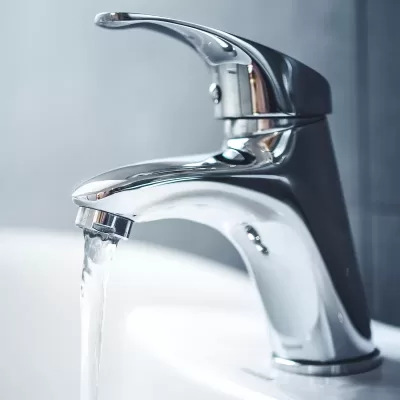
Water, pH 7
Yes, you read that correctly. Water can be the only (chemical) thing you need for cleaning. Directly from the tap. No need for any other chemicals. With the help of Microfiber Cloths or Magic Sponges, you can say goodbye to bacteria, dust, stains, dirt, and soap scum by using water only. And if you adjust the temperature of the water, you can even boost its cleaning power. How’s that for a simple yet effective cleaning solution? Discover more here
Bicarbonate of Soda, pH 8-9
Also known as Baking Soda, is a traditional, safe and non-toxic multipurpose cleaner. It can be used to keep a variety of surfaces in your home sparkling clean and fresh. Bicarbonate of Soda is a base, meaning it reacts with oils and fats, thus allowing it to dissolve dirt, grease, and oil. Additionally, its deodorizing power is the result of an acid-base reaction in which Bicarbonate of Soda interacts with the acidic molecules causing odours and neutralising them. As a salt, it has mild abrasive properties, which provide a scrubbing action without leaving any scratches. How to use it
Castile Soap, pH 9-10
Originating from the Castile region of Spain, Castile soap is an ancient vegetable-based soap that serves as a multi-functional and eco-friendly alternative to many cleaning products. It is known for its gentle cleansing properties on the skin, pets and various surfaces in your home. Made from organic coconut and sunflower oils, this non-toxic, biodegradable and hypoallergenic soap is an effective surfactant that easily removes dirt, grease, and harmful bacteria from surfaces. The key to its cleaning power lies in the soap molecules’ ability to grip onto grease. When mixed with water, these molecules attract and capture dirt and other substances that are not soluble in water. Just a small drop of this concentrated soap can go a long way in keeping you and your family healthy. How to use it
Oxygen Bleach, pH 9,5 -10,5
Also known as Natural Bleach or Eco Bleach is chemically identified as Sodium Percarbonate. It is a safe, non-toxic, and biodegradable alternative to chlorine bleach. When dissolved in water, it releases a mixture of oxygen, soda crystals, and water, which act as a powerful stain remover and deodorizer, leaving no chemical trace behind. It is also known to effectively kill a wide range of bacteria, mildew, algae, viruses, and fungi. It is a must for eco-friendly cleaning, disinfecting, and laundry. How to use it
What makes Oxygen Bleach different from traditional Chlorine Bleach?
Well, for starters, Oxygen Bleach uses Hydrogen Peroxide as its active ingredient. This wonder chemical breaks down into harmless oxygen and water when dissolved in water. In fact, Hydrogen Peroxide is even used in dental products like mouthwashes! It is known to effectively kill microorganisms, including bacteria, yeasts, fungi, viruses, and spores. Plus, Oxygen Bleach is safe for your clothes and doesn’t produce any nasty chlorine gas or harmful substances. In contrast, Chlorine Bleach uses sodium hypochlorite, which is a very harsh disinfectant that can be harmful to your health, even in small amounts. So, if you want to clean and disinfect without any of the negative side effects, go for Oxygen, not Chlorine. Your clothes, the environment and your health will thank you!

Soda Crystals, pH 11 -12
Also known as Washing Soda, is chemically identified as Sodium Carbonate. Sodium Carbonate is an alkali similar to Bicarbonate of Soda but more abrasive. It easily dissolves in warm water and is particularly effective at degreasing, and breaking down fatty, greasy, or oily deposits on hard surfaces or clothes. Its solubility and degreasing properties make Soda Crystals highly effective in laundry and kitchen cleaning. How to use it
Upgrade your Cleaning Game
WITH ESSENTIAL OILS
But why should you clean with Essential Oils?
- Keep your home naturally clean:
Essential Oils are an eco-friendly and powerful way to fight harmful bacteria and microbes in your home. Each oil has its own unique, impressive qualities – from being anti-fungal, anti-microbial, anti-viral, and more. That’s why they’re the perfect natural addition for cleaning your floors, countertops, and even bathroom tiles. - Great for grease and grime:
Especially citrus oils are champions in cutting through grease and leaving your surfaces gleaming. - Ditch the chemicals:
Say goodbye to harsh chemicals and synthetic fragrances produced in laboratories. With Essential Oils, you can enjoy the pure scents extracted from natural plants without exposing your home to harmful toxins. - Spice up your cleaning routine.
Add some fun and pleasant aromas that will not only freshen up our homes but also elevate your mood! Whether you prefer to unwind with soothing aromas or rev up your energy with something zesty, you can customize your cleaning experience with Essential Oils that match the vibe of each room in your home. Mix and match to create your very own personalized scent, guaranteed to leave your home smelling fresh and clean.
Try our selection of Essential Oils specially handpicked for your cleaning needs. Shop here
